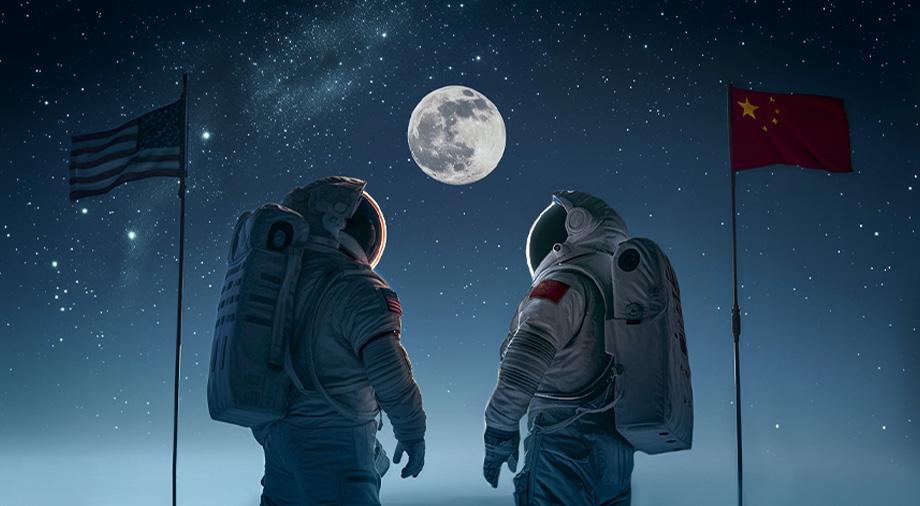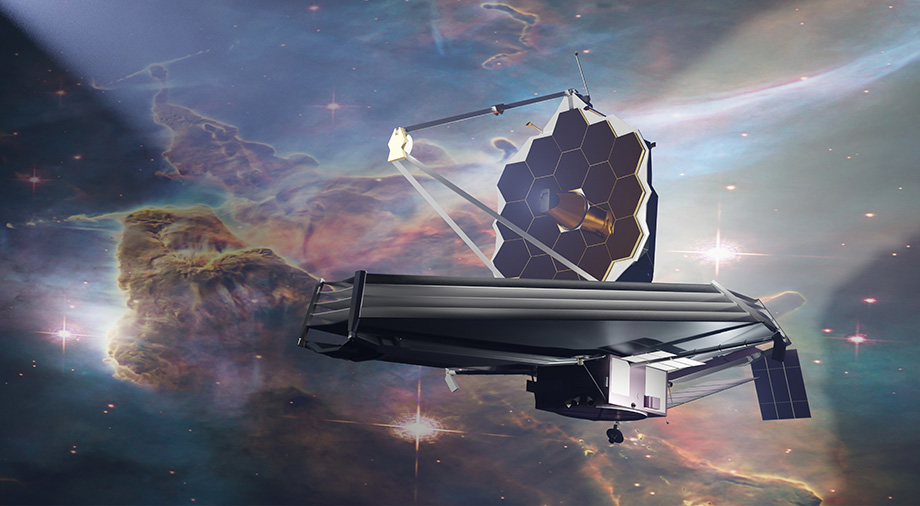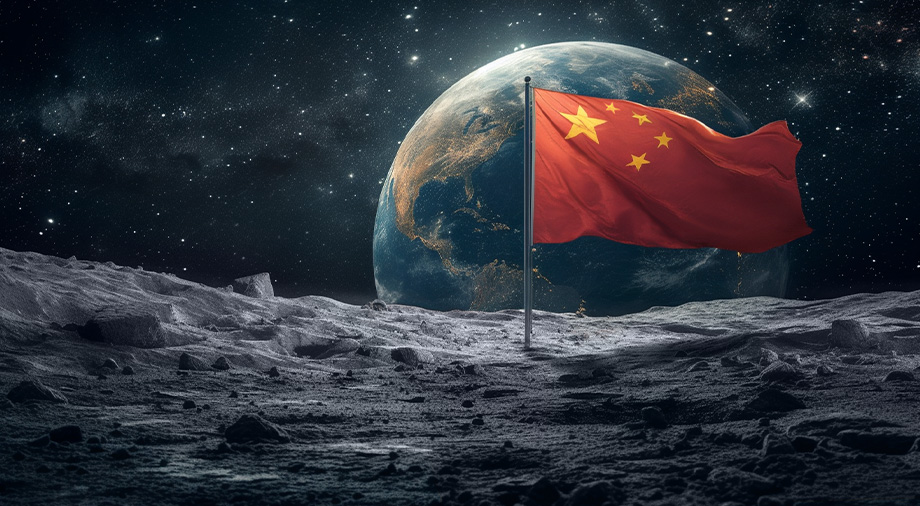A new space race has been gaining momentum for several years now. The US and China are competing to be the first to build a base on the moon. Loud statements are being made, plans are being announced, and sides are accusing each other of intending to appropriate and militarize our nearest cosmic neighbor. To what extent is today’s race to the moon similar to that of the 1960s, and could China overtake the US?
The short answer to the first part of the question is: no, the new moon race is not very similar to the previous one. In the 1960s, the main desire of the United States and the Soviet Union was to demonstrate the advantages of their political systems to the whole world. The key criterion of the competition was one obvious factor — primacy. After achieving this goal, the winner and the loser quickly forgot about the Moon.
Both of the current rivals have much greater ambitions — not just to plant their flag on the moon, but also to gain a foothold there. Since this goal will require significantly more resources, it is worth considering the real capabilities of the opposing sides as of today.
How many steps to a lunar base?
The largest project in the field of space exploration today is the US’s Artemis program. The Artemis Accords are an international addition to it, offering any country the opportunity to join the construction of a lunar base. There is of course one country that has no interest in any relationship with all this, and it is not really expected there.
We are talking of course about the People’s Republic of China. Over the past 25 years, it has transformed from an outsider with only a few satellites to the only state that has fully equipped its own space station in orbit.

Photo: VCG
According to the Chinese, the country’s next target should be the Moon itself. They not only want to land their taikonauts on it, but also to build a base there which will become the basis of the future development of the solar system. The Chinese have already declared this base, which has not yet been built, to be international. However, the list of those who have so far chosen to join them is not impressive.
What we are seeing now is the beginning of a new space race between the West and the East. The rhetoric is already quite heated, but the real success of one or another side will depend on the capabilities they are actually able to develop.
Before the PRC or the US actually start building anything on the moon, they will have to overcome several technological obstacles. Both countries premise their lunar base projects on the presence of water near the Moon’s south pole. However, geological studies of these places are still yet to be carried out by automated probes. In the future, a rocket capable of delivering several tons of cargo to the Moon will be needed. There will also need to be a ship that will take the crew into orbit, and a landing module capable of both landing on and taking off from the lunar surface.
Unmanned programs
The first task necessary for landing people on the moon is to find out as much as possible about the conditions there. Both rivals have already partially solved this issue: the US in the 20th century, and China in the 21st, thanks to five successful missions by Chang’e probes. However, so far both participants of the race lack information about the subpolar region, and the infrastructure for the future construction of the base will need to be prepared in advance.
Both states have assigned this task to unmanned probes. China will carry out the mission with the Chang’e-6, Chang’e-7, and Chang’e-8 probes. The first of them is expected to launch in 2024, while the other two will be deployed before the end of the decade.
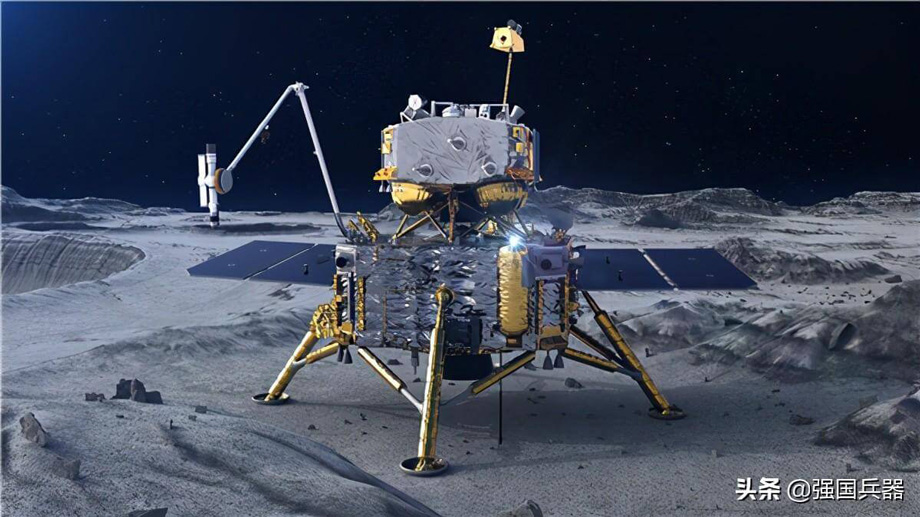
Photo: CNBS
The US has entrusted NASA with all the unmanned missions it needs to successfully land people on the moon. This includes the VIPER lunar rover, which will search for deposits of water ice near the South Pole. Initially, its launch was planned for the end of 2022, but later it was postponed to the end of 2024. The probe is currently being tested.
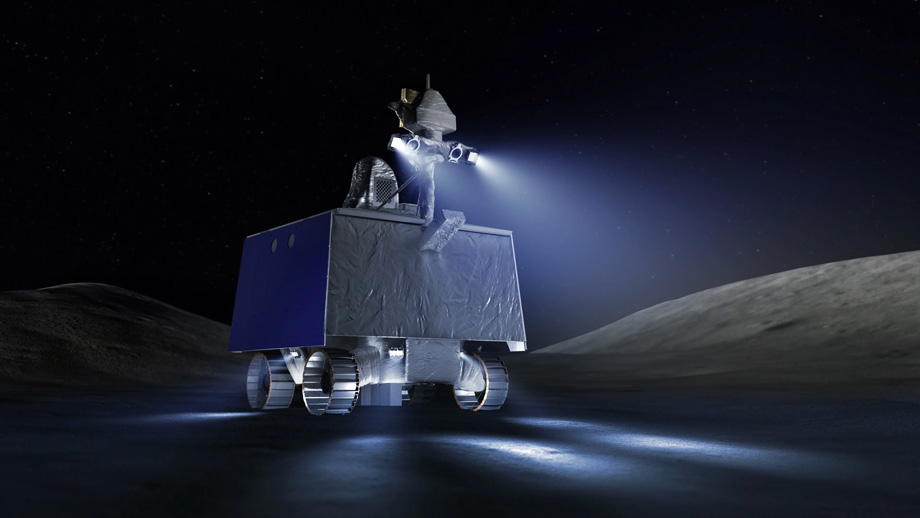
Photo: NASA
The US sold the rest of its unmanned missions to private companies as part of the Commercial Lunar Payload Services (CLPS) program. It started back in 2019, but none of the devices from the program have yet made it to the Moon. For example, Astrobotic Technology’s Peregrine spacecraft planned to arrive in early 2024, but due to a fuel leak, it missed its target and returned to Earth to burn up in the atmosphere.
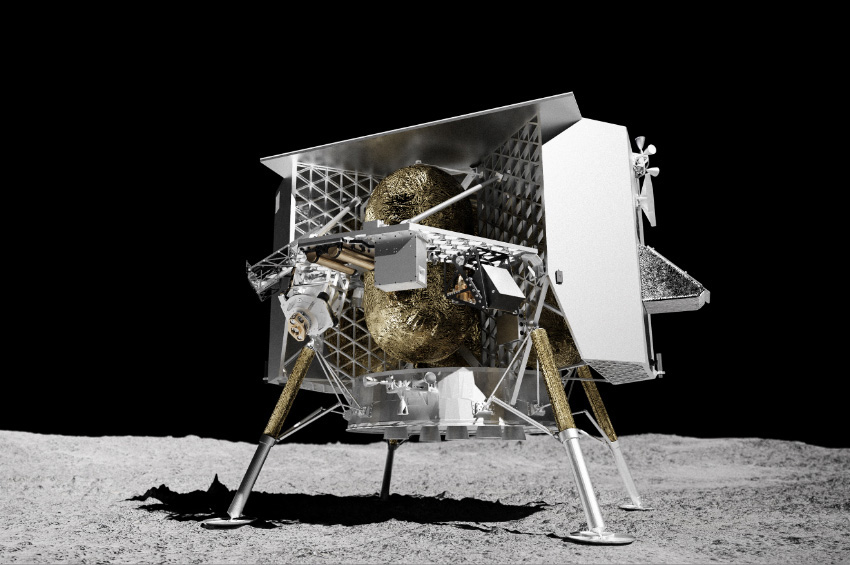
Photo: astrobotic.com
The other companies in the CLPS program are not doing much better. Intuitive Machines’ Nova-C was supposed to launch in 2021, but has just arrived at Cape Canaveral, and its launch is scheduled for February 2024. If everything goes well, there will be two more missions from the company in the future. It is not known, however, when exactly this will happen.
The status of Draper Laboratory’s XL-1 is also currently a mystery. Masten Space Systems went bankrupt in 2022. Deep Space Systems became part of Redwire Corporation, and nothing has been heard about their lunar rover project since then. Firefly Aerospace’s Blue Ghost is signed up for two missions and is scheduled to land on the far side of the moon in 2024 and 2026.
Not everything has gone according to plan with NASA’s international partners, either. ESA, which produced the service module for the Orion spacecraft, and the Canadians, who are creating a robotic manipulator, seem to be doing well. But the Japanese probe Hakuto-R in April this year had every chance to become the first device to land on the moon under the CLPS program. But the disaster prevented this.
A few years ago, it was necessary to state that the PRC was lagging behind the USA in terms of unmanned lunar missions. However, we can already say that the state of the programs of both countries is approximately the same. Everything depends on how successful the missions planned for 2024 will be.
US and Chinese rockets
The next step that both the Americans and the Chinese need to take in order to reach the moon is to build a rocket specially designed for this purpose. The situation here is somewhat ambiguous. The US already has its giant Space Launch System (SLS). Its height is 98 m, and the starting mass is 2,600 tons.
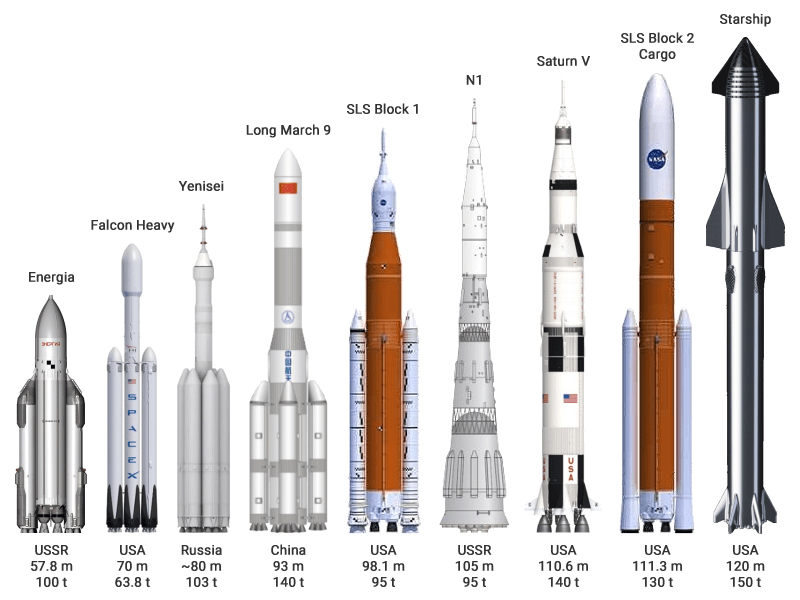
Image: ixbt.com
The SLS was tested in November 2022, and it not only brought its payload into orbit, but also ensured the successful flight of a fully functional ship around the Moon. Next, NASA’s Artemis program will only need to repeat this with astronauts on board.
Beijing does not have all this. Officially, the main contender for the title of the Chinese lunar rocket is the Changzheng-10. With a height of 93 m and a launch mass of about 2,200 tons, it is very similar to the Space Launch System and is quite capable of delivering a lunar ship into orbit.
The issue is that this rocket is still not ready. As of 2022-2023, Chinese engineers were still conducting ground fire tests of some of its engines and stationary testing of other systems. The first launch is scheduled for 2027, but no one knows when it will actually take place.
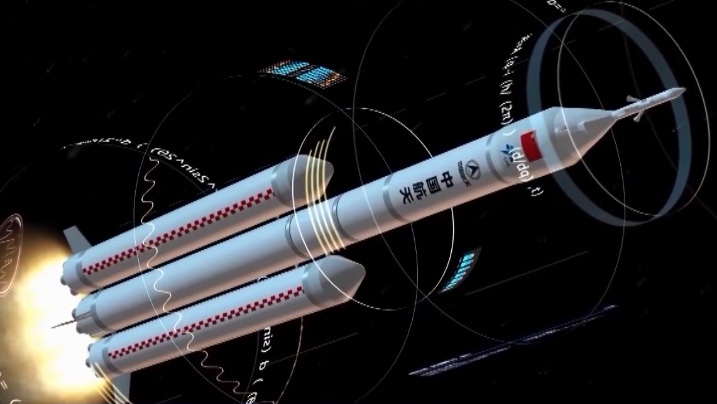
Photo: iasgyan.in
China has another rocket that they will also be able to use to deliver astronauts and cargo to the moon: the super heavy carrier Changzheng-9. This rocket is itself gigantic, with a height of 114 m, with a launch mass of 4,600 tons. It’s essentially a communist competitor to Elon Musk’s Starship.
The difference is that Starship has already been launched twice, albeit unsuccessfully. But the Changzhen-9 has existed mainly on paper since its design was created in 2016. And the timing of its first launch has currently not been announced at all. It will apparently take place closer to 2040.
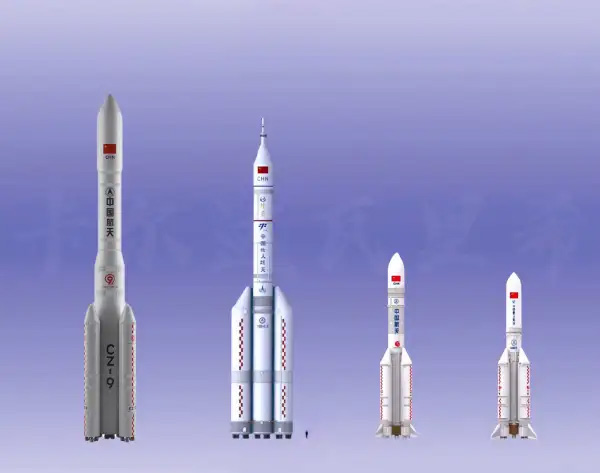
Image: aviationweek.com
To make matters worse, Changzheng-9 was designed from the very beginning as an ordinary disposable rocket. However, in 2022, the developers announced that they had changed its design to make it at least partially reusable. It is not clear how this will affect its delivery timeline.
Thus, it is clear that the US is significantly ahead of China at this stage. However, there is a small nuance. The Artemis II mission is scheduled for 2025. At the same time, significant changes have had to be made in the technological process of rocket production. Whether the second version of the SLS will be ready on time and how many months it will take to bring it to launch is currently unclear. The Artemis I mission took over half a year. In such conditions, no one can guarantee that the first American flight to the moon since the early 1970s will not be delayed, and that China will not have a chance to catch up.
Lunar ships
The next step for both countries on their way to a lunar base would be a spacecraft. And here the United States and China have gone in slightly different directions.
Since the beginning of the 2010s, the United States has been creating the Orion spacecraft, designed exclusively for missions to the Moon. China, on the other hand, has been testing a next-generation universal manned ship since about the same time. It is not only supposed to send people to the moon, but also replace the Shenzhou manned ships in Earth’s orbit, which the PRC currently uses, particularly to send crews to its Tiangong space station. In addition, it is planned to develop a cargo variant on its basis.
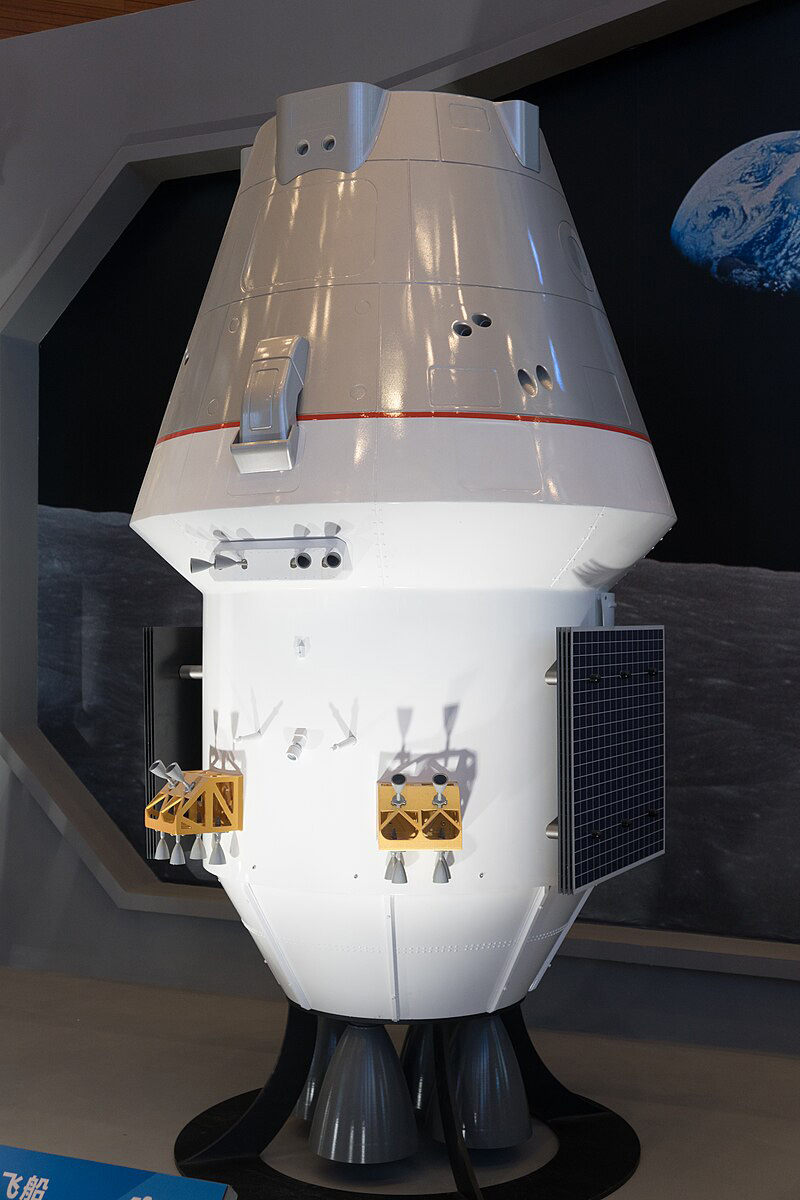
Photo: Shujianyang / wikipedia.org
Both the American and Chinese spaceships have already been in space. Orion made an unmanned flight around the Moon as part of Artemis I, which proved its full readiness for the main mission.
The Chinese have had two launches in the process of developing their new spaceship. First, in 2016, a scaled-down model of it went into orbit, and in 2020, a flight of a fully functional prototype took place under the code name “China’s next-generation manned spacecraft”.
Unlike Orion, which was able to reach the moon, the Chinese ship only reached Earth orbit. While of course this is the Chinese ship’s intended primary domain, but even after its supposedly successful flight in 2020, China has opted to keep flying its taikonauts in the Shenzhou.

Photo: NASA
As a result, there is every reason to believe that the Americans are significantly ahead of the PRC in terms of ships. However, this situation may change dramatically if serious problems arise with Orion, and the Chinese launch their next-generation ship to the moon, at least in an unmanned version. In this case, the two countries would be neck and neck.
Lunar landers
Of course, just getting to the moon on a ship is far from the end of the story. Neither the U.S. nor China is considering a surface landing with the same spacecraft that will carry crews to lunar orbit and return home. For this, the countries plan to use special landing modules.
Here, the US and the PRC have also gone their separate ways. China has built a small specialized module with the help of state-owned enterprises, which is very similar to the one which the Americans used during the Apollo program. A full-size model was shown to the general public in 2023.
This device has not yet flown into space. It is expected that it will be launched into lunar orbit separately and will wait there for a ship with a crew. Next, the two spacecraft will dock, and people will board the module, undock, and land on the Moon’s surface. When returning, everything will happen in reverse.
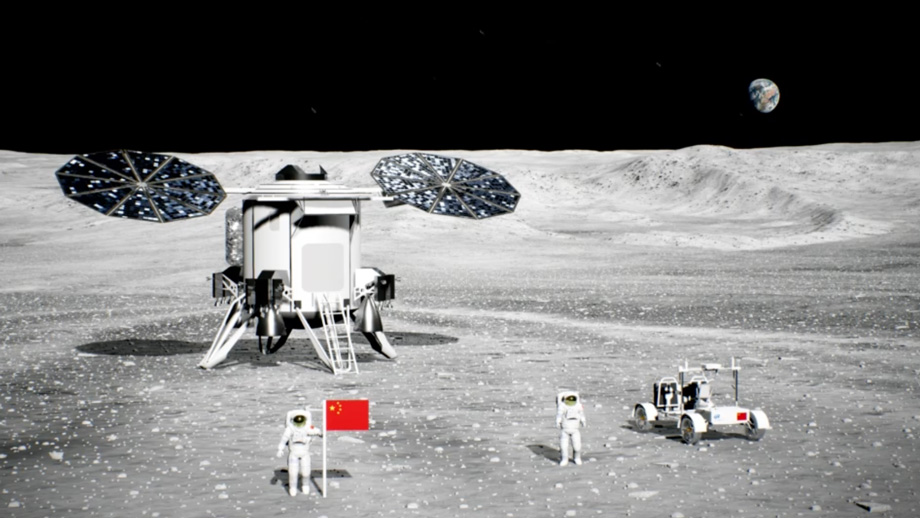
Photo: CGTN
The Americans have delegated the production of their lunar lander to SpaceX, which has decided to make it as a variant of their Starship spacecraft. On the one hand, this will allow the Americans to create a much larger and more powerful device than the Chinese, as well as to save on development time.
At the end of the day, everything will depend heavily on SpaceX’s ability to launch its ship into orbit in the first place. After all, Starship’s flight to the moon will only be possible with the help of its gigantic first stage. Thus, until the main modification of the ship makes its first normal flight into orbit, using Starship to send a lander to the Moon remains out of the question.
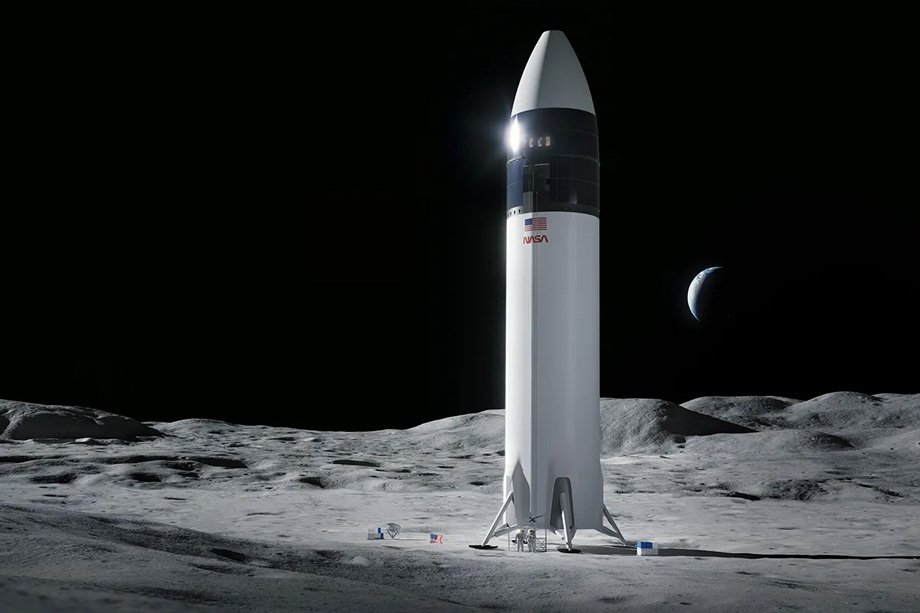
Image: SpaceX
SpaceX tried to launch Starship twice in 2023. However, these efforts ended in failure even before the spacecraft even reached orbit. The next attempt is scheduled for February 2024.
Be that as it may, the third Artemis mission cannot take place without the SpaceX lunar module. After all, Americans no longer have anything else with which to travel to the Moon. America’s lunar landing attempt is planned for 2025, meaning that if SpaceX is not up to the task, the mission will have to be postponed dangerously close to the deadline for which the Chinese have set their attempt to land people on the moon.
Station and space suits
As for the actual construction of lunar bases, the intentions in this regard are extremely vague so far. All that is known for certain is that both countries plan to build them at the south pole of the Moon, next to deposits of water ice. It is also expected that the bases of both states will consist of several separate modules.
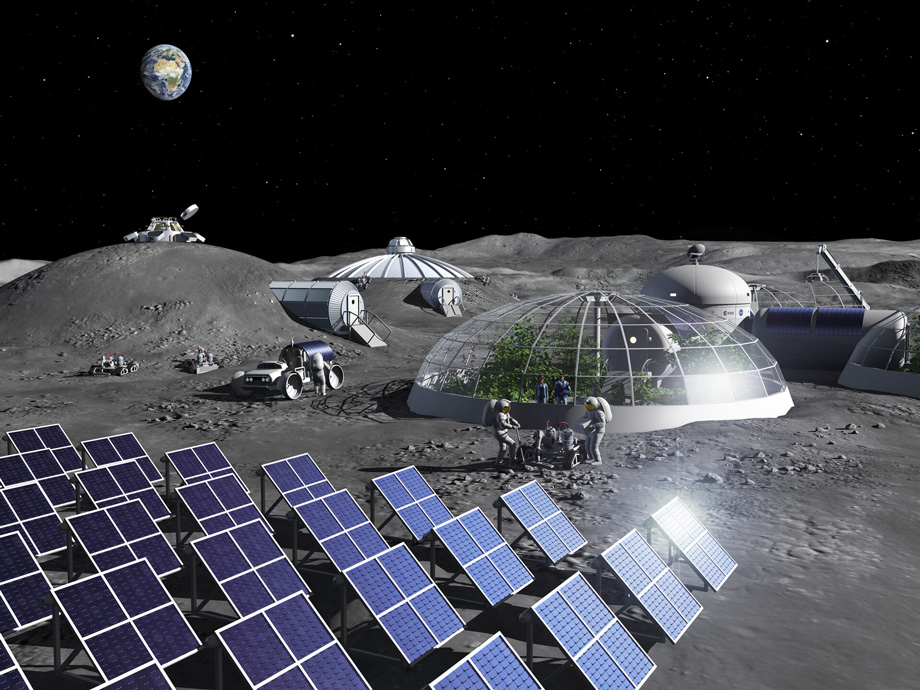
Image: NASA
But their actual design remains a secret. Both countries have published only general concepts, and many possibilities have been raised. In particular, the American lunar base project calls for the placement of a station in lunar orbit, which will serve not only as a transfer hub, but also as a base for launching spacecraft to other planets.
The construction of the Gateway station should begin in the late 2020s, but no plans to produce any of its modules have yet been announced. This means that timelines could again be pushed back.
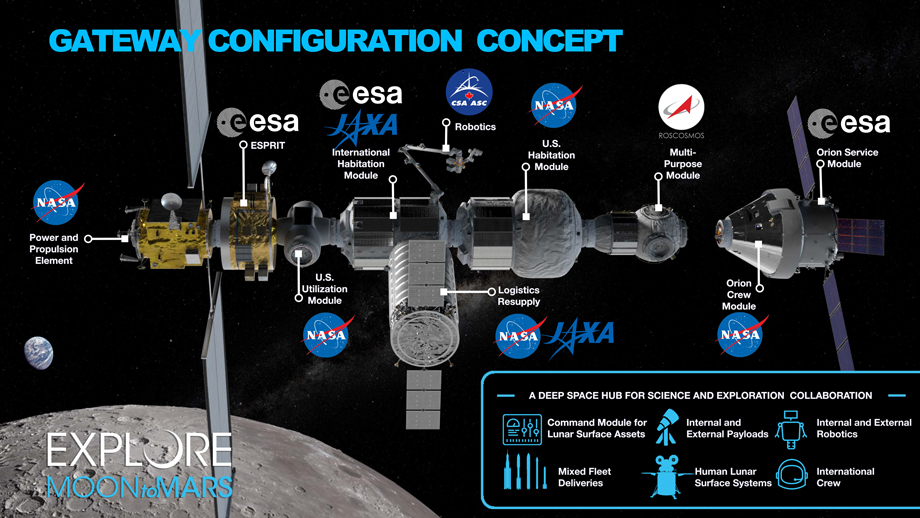
Image: NASA
Many elements still remain to be completed to carry out both America’s and China’s lunar ambitions. For example, astronauts will need special spacesuits to walk upon the lunar surface. Without them, no landing will take place at all. China has not yet said anything about this. The US on the other hand has entrusted their spacesuit production to Axiom Space, which is in no hurry to announce the final design concept.

Photo: Sky Headlines
Overall, the moon race situation is such that, at least up to the point of landing people on the moon, both the United States and the People’s Republic of China have outlined their general visions, and each side is now working on the technical aspects of carrying out their projects. However, it is currently unknown when these elements will all be assembled, thereby allowing humanity to again send people to our nearest neighbor in the sky.
Both countries still have a great many production tasks and technical tests ahead of them, each one could cause significant delays. It is thus too early to say who will win the new lunar race. It is also unclear how the creation of space coalitions, which the US and China are both actively working on, will affect the end result.

